Ah the age old question of cost! It can be quite the mystery as to what a eCommerce website will cost you. Today we take a look at what key factors will influence the cost of your eCommerce website.
It’s about time. Mostly.
The biggest determining factor for how much your eCommerce website will cost is time. How long will the project take? Who needs to be involved? How much does it cost to employ the necessary people for the duration of the project? Answer those questions and you’ve established a huge aspect of eCommerce website costs.
The In House eCommerce Team
If you’re hiring an In House team to build your eCommerce website you’ll probably need a minimum of 3 people (but potentially many more depending on the scale and scope of the project).
- eCommerce Project Manager (PM) – a jack of all eCommerce trades. This person ensures the project gets done on time and within your budget. They will often also be Lead QA, Lead BA, Content writer and will often get their hands dirty with code if required/allowed. On bigger project the PM will recruit and manage individuals for these specific disciplines.
- Lead Developer – the main person responsible for producing the code – either 100% bespoke (not recommended for about 80% of projects) or on top of an existing eCommerce software platform (see below). On bigger projects there could be at least 2 or 3 additional developers led by the Lead Developer.
- Lead Designer – in this definition the Lead Designer is the person taking the initial early Visual Design/branding stage straight through to the low level HTML/CSS/JS. On larger projects it’s likely that you would have a number of frontend developers who are solely responsible for frontend engineering.
So you’re looking at a team of a minimum of 3. But very quickly you could require a team of 9-10 people if your project scope requires it. So how much does that cost? The job market for people with eCommerce expertise in 2015 is about as red hot as it’s been in 15 years so you’re probably looking at an average of $100,000 per person per annum.
So a team of 3 will cost you in the region of $300,000 per annum. A team of 10? In the region of $1 million per annum. WHAT? Yip, good eCommerce people ain’t cheap folks 🙂
Your mileage may vary depending on your location in the world but $100,000 per person as an average all things considered including healthcare costs, employer taxes, office/hardware etc. is pretty reasonable. If you’re based in San Francisco or New York it’s definitely considered cheap!
There’s been a pretty seismic shift happening in the web agency world of late where large well known agencies have been gobbled up by big organisations who now believe it’s not smart to rely on an external agency for what is now a critical part of running any business with big ambitions in 2015 – design and software engineering excellence. But for many businesses their scale and revenue cannot justify the investment an in house team requires.
My recommendation would be that a full eCommerce In House team should only be considered for businesses who are turning over in excess of $3m per annum.
Why $3m? At that point you can hire a team of 3-4 people and your costs will be in the region of 10% of turnover. Before reaching this point my recommendation would be to rely mostly on external agencies as they should be able to provide many of the benefits of an in house team at a lower price point. (NOTE: We’re specifically talking about an eCommerce team here – NOT the entire team required to run your eCommerce website. You’ll also need to think about the people you need to manage order fulfilment, shipping, accounting, stock etc. but that’s for another day!)
The one person I would not outsource to an agency from day one is the person responsible for the commercial success of your eCommerce website. This could be you! As you grow, this is going to be an eCommerce manager who will most likely manage your agency/freelance team and eventually your in house eCommerce team.
So your maturity as an eCommerce business is vital to determining how best to go about building an eCommerce website.
The stages of eCommerce maturity
The first thing to consider is where you are at in terms of your own eCommerce experience. We’re not talking necessarily just about technical skills here. We’re talking about your own personal experience when it comes to owning and operating eCommerce ventures. This is incredibly important when it comes to determining the costs associated with building you an eCommerce website.
Why? A wide range of skills are required to run a successful eCommerce operation; world class sales and marketing expertise, top class branding and packaging, a 6th sense for customer price sensitivity, excellent customer service and fluency in digital marketing and how eCommerce management systems work.
For those who’ve never run an eCommerce website before, this list can seem intimidating. Well it should be! Running a successful eCommerce operation is not easy and it takes time to acquire these skills. If you’ve gained them already through running your own eCommerce websites or by working for another eCommerce website you’ll already be ahead of the game when it comes to talking to building a new eCommerce website.
If you’re entering into the eCommerce world without experience in these areas, be prepared to spend a lot of time learning the ropes. If you’re considering working with an agency to build your eCommerce website, a good one will want to know what level of eCommerce fluency and expertise you have as this incredibly important to almost every aspect of building the website. Typically if you’ve less eCommerce fluency things can take a lot longer as there will be a steep learning curve for you during the project. The agency will also most likely have to factor in a longer lead time for training and post project completion support as you get to grips with running an eCommerce website.
For those who have extensive eCommerce experience it’s usually possible to get to the root of exactly what is required much quicker which can help reduce the time required to complete the project – thereby reducing overall project costs. We can determine your eCommerce maturity be using the following framework.
eCommerce Maturity Framework (EMF)
This maturity framework is really just a way of establishing where in the grand scheme of things your eCommerce business is. Are you a multi million dollar eCommerce operation with a big team in place who are looking to increase conversions by 5% per annum? Or are you a one man operation who can just about turn on a computer who wants to start selling your beloved hand painted sea horses online? These are 2 very different types of situations requiring very different approaches.
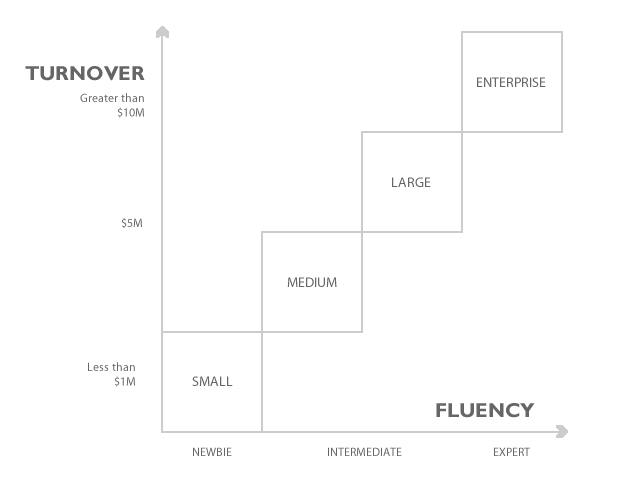
- Small – You’re probably just getting going. You may be a one or two man operation. You probably don’t know a lot about eCommerce. You can benefit a lot from the guidance of an external agency. Your budget (or lack thereof) also prohibit you from building an in house team.
- Medium – You’re a pretty successful eCommerce operation with revenues in excess of $1m per annum. You’ve developed some pretty sharp eCommerce skills to get to this level but you still need the assistance of an external agency to help drive your business forward.
- Large – You’re an eCommerce business turning over in excess of $5m per annum. You’ve reached a point where it now starts to make sense to build an eCommerce team internally. You can still keep working with an agency if you wish (particularly for one off specialist projects), but you should definitely give consideration to building a team in house.
- Enterprise – You’re an eCommerce juggernaut with revenues in excess of $10m per annum. You NEED an in house team just to keep up. You’ll likely have a ton of projects that you need to execute on an ongoing basis to continue to grow the business. At this level, an in house team is a necessity to realize long term benefits of having a team of people focused just on your business.
Using the EMF to help make decisions about how to build your eCommerce website
Simply put, you can use the EMF to assist you make decisions about when is the right time to build an in house team. It doesn’t make financial sense in general to build an in house team for SMALL and MEDIUM sized eCommerce websites. But once you go beyond $5m per annum it starts to look like a more compelling option. LARGE and ENTERPRISE eCommerce websites are in a enviable position where they can start to build a team to work on long term, visionary projects that require significant investment that’s just not possible for smaller operations. In this situation you will want to build that kind of expertise in house as it becomes a source of sustained competitive advantage in your business in the long run.
So what about Small and Medium sized eCommerce websites?
So you’ve determined you not ready for an in house team just yet. What are your options? The good news is that you have tons of them – if anything, too many! Here’s what I would recommend.
Newbie eCommerce Website
For anybody who is a newbie to eCommerce your objective should be to spend as little as possible in the beginning. The harsh reality is that the vast majority of eCommerce entrepreneurs will fail. That doesn’t mean you shouldn’t try. It may mean though that you will attempt this eCommerce thing a few times with different ideas and products in different markets before you start to build some traction.
For Newbies, CommerceGurus Recommends: Shopify
Shopify is about as simple as it gets. You don’t need to worry about your own hosting or servers. You won’t have to worry about software and server upgrades, server security, ssl certificates, order emails and so on. Shopify take care of all of this for you.

From as little at $14.99 per month you can be up and running with your own eCommerce website in a matter of minutes. That’s hard to beat! What’s more, Shopify is designed to scale with you as you move up through the different stages of the EMF. There are many enterprise eCommerce websites with sales in the millions that continue to use Shopify. If you have no existing website (and associated hosting costs) then Shopify is a no brainer, particularly if you don’t want to go down that road at all. On top of your monthly costs, you are also likely to spend money on how your eCommerce website looks (which is what is known as Shopify Themes). Themes typically costs between $100 and $200 for Shopify.
Shopify Costs for a Newbie eCommerce website (per annum)
- Starter Package on Shopify: $179.88 per annum (14.99 * 12)
- Shopify Theme: $200
- Domain Registration: $15 per annum
Total: $394.88
So for under $200 per annum and a one off $200 for your theme you’re getting a world class eCommerce platform.
Custom Shopify Theme Design
As you get more and more traction you may wish to consider creating a custom theme for your store. A custom theme will differentiate your store from others that use your previous “off the rack” Shopify theme. A custom Shopify theme will cost considerably more than the off the rack one you might have previously purchased. Custom theme design prices will be based primarily on 3 factors:
- The complexity of the design you wish to implement.
- The scope of the project.
- The expertise of the agency/freelancer you choose.
The third variable, agency expertise, is perhaps the most important. Typically a well known, experienced Shopify expert who create custom theme designs full time and who is based in a Western country is going to cost considerably more than a new expert based in a developing economy. You will need to choose an Shopify Design expert that’s right for your project. A good indicative cost for a custom Shopify theme would be in the region of $2,000 – $5,000 for a small eCommerce website. Prices for medium, large and enterprise eCommerce websites can be significantly higher (e.g. $20,000 – $50,000).
So if Shopify is so damn amazing why isn’t every eCommerce website in the world just using that you may ask? Shopify is what is called a Software as a Service (SASS) product meaning that you do not have direct control over the software – which is fine and dandy – as long as the software provides all the functionality that your business needs. For most conventional eCommerce businesses, Shopify should be more than sufficient. But for those that need something that Shopify doesn’t provide what alternative options exist?
For intermediates and experts, CommerceGurus recommends: WooCommerce
Regular readers of this blog will know we are especially fond of WooCommerce. In a few short years WooCommerce has become one of the most popular eCommerce platforms in the world. If you already have a WordPress site in place and have experience managing websites running WordPress, WooCommerce is an excellent starting for both Small and Medium eCommerce websites with intermediate and expert eCommerce fluency. If you’re a small, newbie eCommerce website with little or no prior WordPress eCommerce you would be better sticking with Shopify unless you’re prepared to spend a good bit of time and money to figure out how to use WordPress, setup your own hosting, payment gateway and so on which can be intimidating if you’ve never done it before. (HINT: DON’T go down this road if you’re just looking to get something up and running quickly).
But if you’ve already figured out WordPress you’re in a great position to jump into WooCommerce quickly.
WooCommerce costs for a typical intermediate/expert website (per annum)
- eCommerce Website Hosting: approximately $50 per month – $600 per annum (Siteground VPS – Read more about our recommended WooCommerce hosts.)
- Domain Registration: $15 per annum
- SSL Certificate: $50 per annum
- WooCommerce Theme: $60 – $100 (Check out our WooCommerce themes)
- WooCommerce Plugins: $0 – $1500
So your annual costs for running a typical WooCommerce powered eCommerce website will be between $735 and $2000. This is a bit higher than the entry level Shopify plan (although the entry level Shopify plan is quite restrictive for all but the simplest eCommerce websites). When you go the self hosted route you will have a multitude of costs which you’re most likely paying to different providers.
Even if you already have WordPress hosting, it may not be suitable for running an eCommerce website. You’ll also have a myriad of additional costs for things like SSL certificates that Shopify would previously have looked after for you. You will also most likely need some commercial WooCommerce plugins which will vary in price (there are also plenty of excellent free WooCommerce plugins but we’re focusing on costs for now). A typical WooCommerce plugin will cost between $50 – $200.
In our experience it’s common that a typical WooCommerce website might end up using between 5 and 10 commercial plugins. Each of these plugins will typically have an initial cost plus a renewal an annual fee for future upgrades and support. (Find out where to find the best WooCommerce plugins).
Custom WooCommerce Themes
Just like with Shopify, there is a massive ecosystem of WooCommerce experts creating a wide range of WooCommerce themes and plugins. In fact it is this ecosystem which makes WooCommerce so compelling. Chances are there will be a plugin out there for the majority of use cases that you as an eCommerce website owner might think of. And if there’s not, you can either build it yourself or hire a WooCommerce expert to build it for you. This removal of constraints is a key differentiator from Shopify. If the nature of your eCommerce business requires something a bit different from the general shopping cart experience, it could be that WooCommerce gives you a platform that you can shape to meet your needs.
What does a custom WooCommerce theme cost?
In our experience, when we create a custom WooCommerce theme for a client, we’re generally doing a lot more than creating just the theme. We’re usually leading an eCommerce implementation project from start to finish. In this scenario, you’re typically talking about the following:
- Requirements Gathering/Discovery – this starts with establishing your eCommerce maturity using the EMF framework we revealed earlier. We then move on to define the goals of the project, including defining the scope, features and deadlines for delivery. For larger projects this will extend to creating high fidelity prototypes of all aspects of how the shopping experience will work. When we work with SMALL eCommerce websites, this is typically a 3-5 day exercise. With MEDIUM and LARGE eCommerce websites, this is typically a 15-20 day exercise. For ENTERPRISE eCommerce websites this process can take 2-4 months to complete.
- Design – The Design Process typically splits out into 2 distinct sub phases.
- Visual Design – The client and the designer work together to agree the overall visual design concepts for the new eCommerce website. Traditionally, client concepts were created as pixel perfect concepts in Photoshop and refined ad infinitum based on scope constraints to signoff. Nowadays it’s much more common to design within the browser to produce rapid HTML prototypes to fully consider the multitude of different types of browsing devices.
- Frontend engineering – Once the Visual Design has been agreed, the frontend build is completed. This used to be a reasonably straightforward task. With the evolution and advancement of frontend frameworks, responsive design, javascript frameworks, pre-compilers and linters, the frontend engineering phase has become critical to delivering highly innovative and engaging eCommerce user experiences.
- Development – The development process will typically involve the following:
- Install and configure WooCommerce
- Install and configure all required WooCommerce and WordPress plugins
- Implement any custom features and functionality as per the agreed project scope
- Developer QA and Testing
- Testing
- Beta release and UAT test cycle
- Performance testing
- Cross browser testing
- Code Freeze
- Handover and Training – it’s at this point that once the code is frozen, all products and associated content are loaded for production use. Typically for SMALL eCommerce websites, we expect and recommend the customer do this. Typically this is possible for smaller eCommerce websites as there might only be a handful of products.
- The cost of imagery – this one is not to be underestimated. We talked before about the importance of your product imagery on eCommerce websites. If you don’t already have great product imagery, you might need to set aside a separate budget for product photography ($500 – $2,000 would be typical for a small eCommerce website with a limited product range).
A typical budget for a WooCommerce custom eCommerce project would be between $10,000 and $20,000 for SMALL to MEDIUM eCommerce websites. Scope and eCommerce maturity will significantly influence which end of the scale a project will fall into.
How much for Large and Enterprise Websites?
As you can see, there are a ton of things to consider just for Small and Medium sized eCommerce website – never mind the larger ones 🙂 We think that deserves a blog post of it’s own which we’ll be working on very soon so make sure to sign up for our newsletter to be notified when it’s published.
Further reading!
WPBeginner has a great guide covering How Much a WordPress website costs in 2017 – it covers WordPress in general as well as WooCommerce – go check it out!




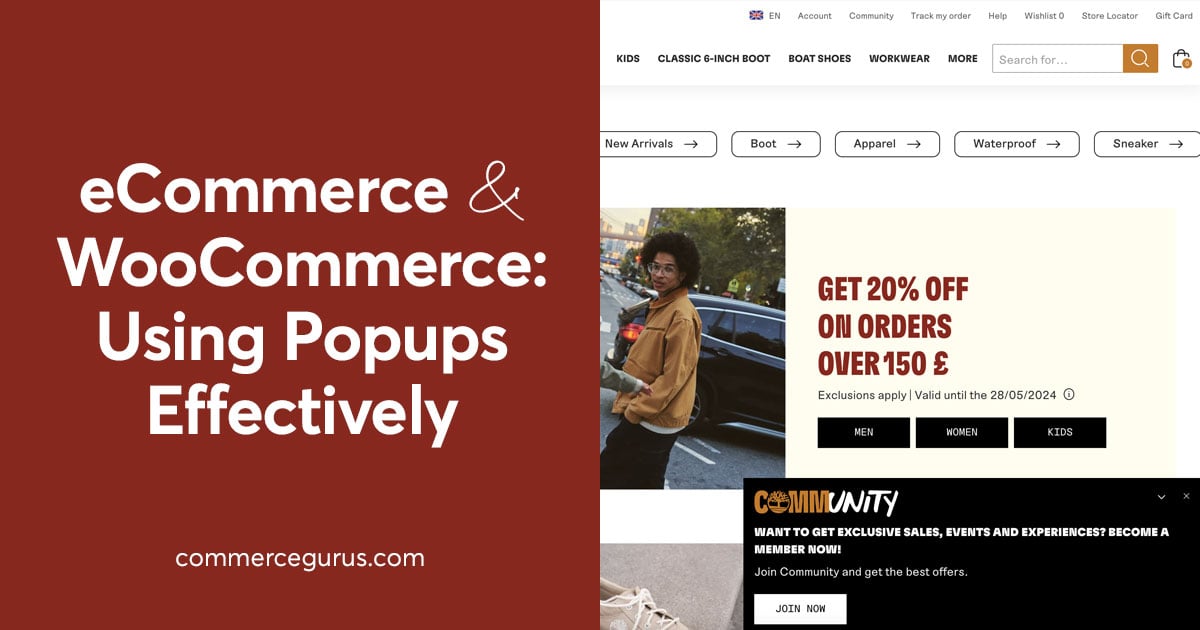

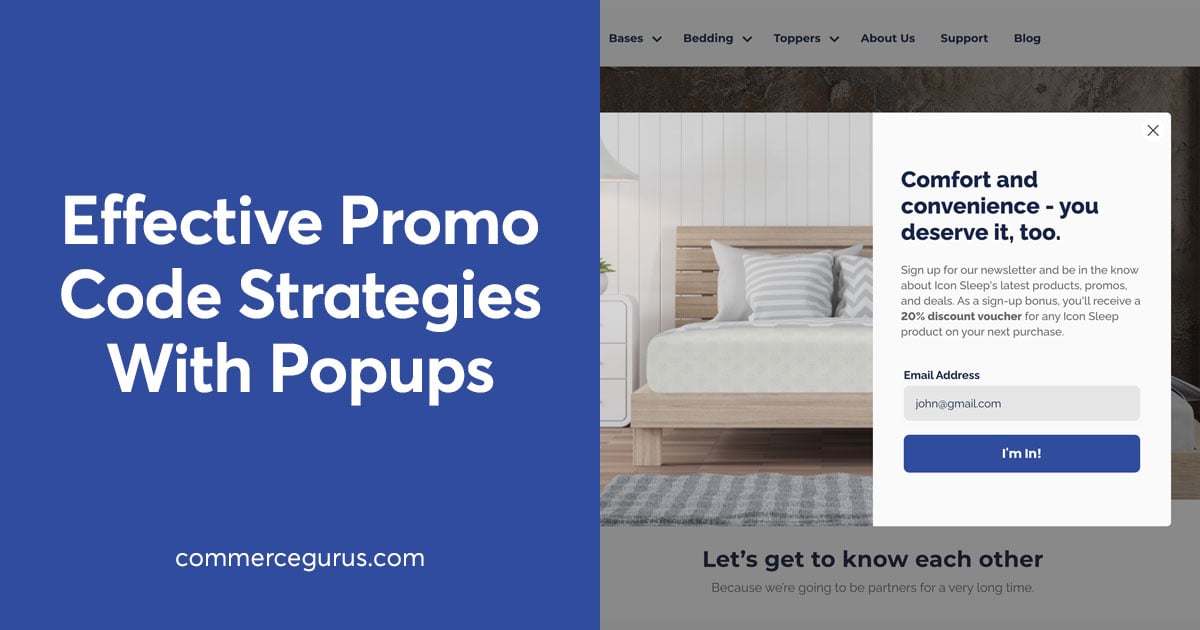
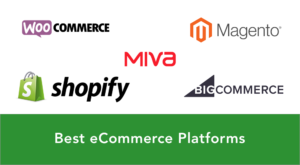 Best eCommerce platforms in 2024 for beginners and experienced eCommerce businesses
Best eCommerce platforms in 2024 for beginners and experienced eCommerce businesses Captiva WooCommerce WordPress Theme
Captiva WooCommerce WordPress Theme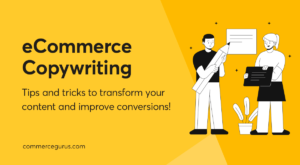 eCommerce Copywriting
eCommerce Copywriting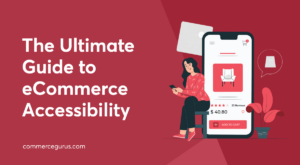 The Ultimate Guide to eCommerce Accessibility
The Ultimate Guide to eCommerce Accessibility
1 Comment